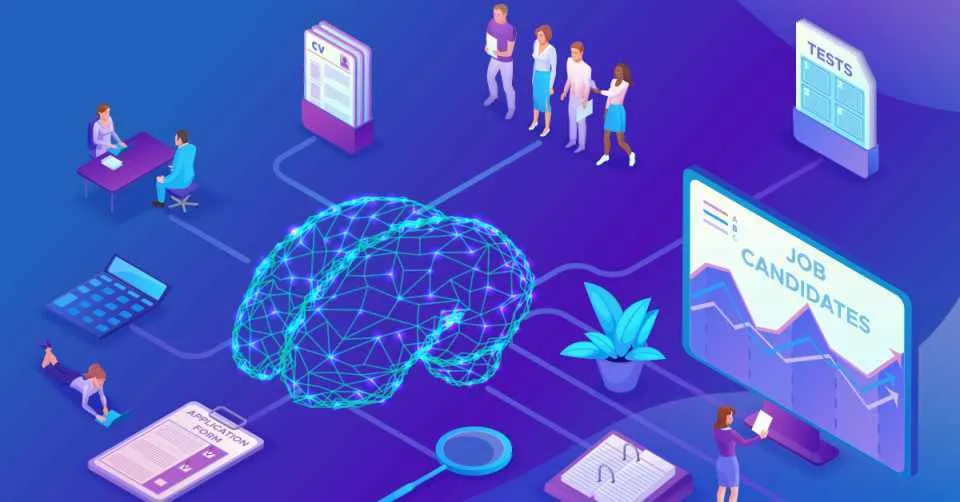New machine learning algorithm developed by Asuria, Deakin University, and Professor Jo Ingold to increase accuracy of job-seeker placements and sustained employment potential Asuria’s Job Matching System (JMS) to launch by mid-2022
A new artificial intelligence algorithm developed by employment services provider, Asuria, Deakin University, and expert in the employability and skills sector, Professor Jo Ingold, is set to bring a new level of data-driven veracity to job seeker support, by applying machine learning to the process of finding suitable, sustainable employment for people looking to find or change jobs.
Set to launch by mid-2022, the Job Matching System (JMS) is the result of work commissioned by Asuria and developed with Deakin University by Professor Jo Ingold, Associate Professor of Human Resource Management, and eResearch & Data consultants from Intersect Australia—Dr Andrew Goh (eResearch Analyst, PhD Mathematical Science, MSc, MBA), and Dr Jerry Lai (Senior eResearch Analyst, PhD Behavioural Science, Master of Statistics [MSTAT], BBSc 1st Hon)— who are aligned to the University through the Deakin eResearch Unit.
The algorithm will use modelling on participant characteristics, coupled with an anonymised initial dataset provided by Asuria of over 6,000 job seekers, including hundreds of thousands of records, to suggest the occupations most likely to result in sustained employment for a participant.
Personal characteristics and circumstances analysed by the JMS across 19 data points will include housing instability, mental health, education, criminal history and more.
The algorithm will then draw from the case histories and outcome data from the 6,000+ Asuria participants who have achieved 26 Full Week Outcomes from the jobactive program, including data such as outcome, time to outcome, time in new role, and more.
The JMS will then suggest occupations that are most likely to lead to a 26 Full Week Outcome (successful time spent in a new role) for the job seeker.
Driving ongoing improvements in the accuracy and efficacy of the JMS, new insights ascertained from participant characteristics and outcomes will be continuously uploaded to Asuria’s purpose-built data warehouse. This consistent ingest of new data will support the machine-learning algorithm in its ability to identify suitable roles highly likely to meet job seekers’ aspirations, align with employer requirements, and achieve sustainable outcomes.
“We can optimise the matching process in many different ways; for example, rate of success, staying power, shortest time to achieve desirable outcomes and more. Essentially, we expect the JMS to become more customisable and accurate with time and data,” said Dr Jerry Lai and Dr Andrew Goh, eResearch & Data consultants at Intersect Australia.
Rather than being a fully automated or self-service instrument, the JMS will serve as a digital tool provided exclusively to Asuria’s network of Job Coaches across Australia.
From mid-2022, use of the JMS will be introduced among all existing and new Asuria Job Coaches, while ensuring human judgement and decision-making continue to be responsible for placing job seekers into new roles.
Con Kittos, Chairman and CEO of Asuria, says: “The New Employment Services Model set to be introduced by the Department for Education, Skills and Employment in 2022 will raise the bar for employment services providers across Australia, challenging us to build technical solutions fit for the future.
“However, in doing so, it’s crucial to ensure that the human element remains at the heart of the support job seekers rely on to reach their potential, with Asuria’s Job Matching System providing precisely the kind of augmented employment support job seekers deserve when it comes to matching them with the employers best placed to deliver sustainable outcomes.”
Associate Professor of Human Resource Management at Deakin University, Professor Jo Ingold,whose expertise in the employability and skills sector underpinned the development of the JMS, adds: “With the advent of commercially available artificial intelligence solutions, the only impediment to enhancing the employment sector’s ability to refine job-matching accuracy, is providers’ willingness to innovate and invest in these technologies.
“The JMS is a testament to what can be achieved in an area as complex and fluid as the labour market, when real-world experience and human ingenuity are combined with big data, empowering front-line decision makers with the ability to make better informed decisions.”







